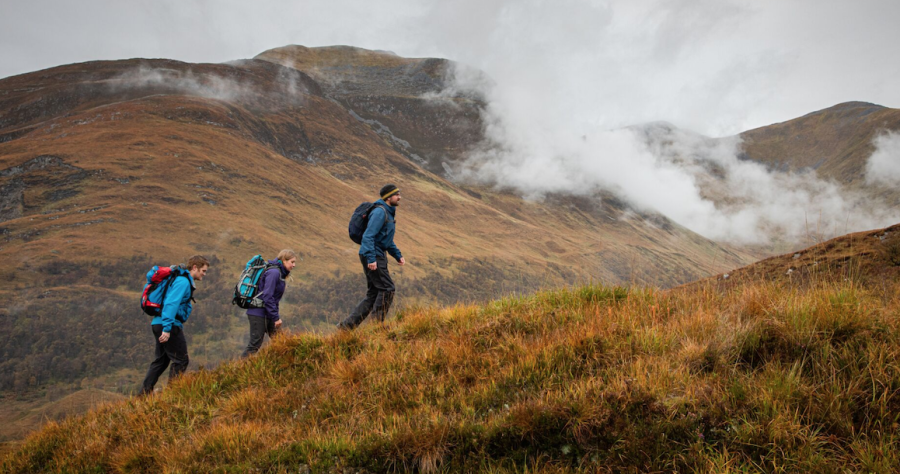Let’s be honest, hiking in Britain inevitably involves confronting some pretty crap weather. With an unpredictable winter approaching, here are our tips for enduring – even enjoying – the ever-changing, never-boring climate of our hills and mountains.
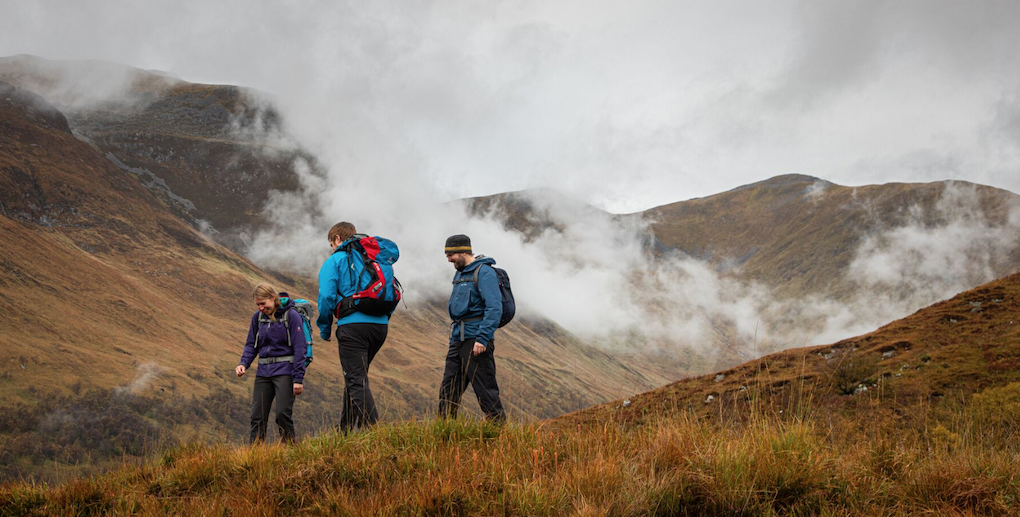
For better or worse, there’s no doubt that this Atlantic archipelago we call home is indelibly defined by its weather. Some Eskimo languages are said to have 50 words for snow, but ours is 50 shades of grey, full of expressions to describe the atmospheric conditions which define our volatile climate.
Is the damp outside dreichness or drizzle, mist or mizzle? It is it raining stair rods, pissing it down, raining cats and dogs, or simply spitting? Is the morning haze a fog, a fret or a haar? Is the wind blustery, gusty, squally, stormy, or just plain ol’ blowing a hooley?
Having your perfect hiking, hill walking or wild camping plans frustrated by a bout of miserable weather is something that can happen at any time of year in this part of the world, but we get an annual reminder of the grim possibilities of our climate as the summer slides into the blustery mushiness of autumn and the hill tops turn into much less hospitable-feeling places. If we’re very lucky, the coming winter may be a glorious affair of Alpine-style blue skies and snow-covered mountains, but the chances are it will be that classic British thing – an unpredictable hotch-potch.
But even under grey skies, the hills and mountains can still provide joy, fun, challenge and beauty; bad weather doesn’t mean you have to have a bad time. So here are a few tips and tricks to endure our distinctive climate, make the most of whatever it throws at you – and maybe, just maybe, start to enjoy it.
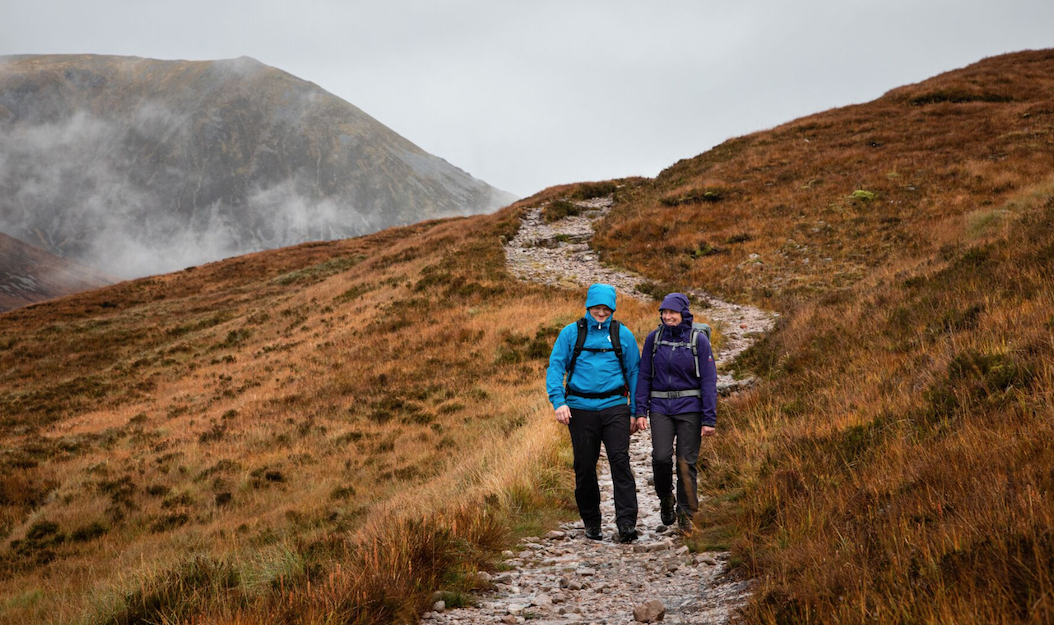
Forget the pursuit of perfection
In an era where everyone is chasing idealised Instagram-filtered imagery, it’s easy to forget that the sky is not always a perfect unblemished tint of cobalt blue, or that not every sunrise is beautiful enough to be a background to a yoga advert. The pursuit of perfection can sometimes make us too quick to write off the sub-optimal, but we should appreciate the warts-and-all beauty of our climate as it really is, in all its mercurial glory.
The volatility of our weather makes for ever-changing light and conditions; we get cloud inversions, Brocken spectres, sun dogs, snow dumps, rainbows, towering cumulonimbus, sudden shafts of light breaking through the sky, morning mists steaming in the sun, wind-carved ice formations, and all the many fascinating things the weather does to the land and the life of the land, like sculpting fascinating rock formations, or stunting high-altitude trees into incredible bonsai-style shapes. Who needs boring blue skies?
Dress for the weather
“There’s no such thing as bad weather, only bad clothing.” This hoary old refrain has its limits – not even the fanciest waterproofs will keep truly horrible weather at bay forever – but it has a lot of truth to it.
To stay warm, it’s vital to stay dry, making head-to-toe waterproof kit essential – but it must also be breathable enough that condensation doesn’t become trapped inside your clothing and make you feel drenched anyway. An insulated jacket made from down or a synthetic insulating material which you can slip on to stop your body cooling down at rest and food stops is a must (see p.82 for Judy Armstrong’s review of the latest women’s synthetic insulated jackets, and the November issue of TGO for Chris Townsend’s takes on the best general lightweight insulation.)
While wet weather is an obvious enemy when it comes to staying warm and comfortable, the real difficulties come when wind is part of the mix, particularly in winter. Strong gales tire you out quickly, they can carry eye-stinging spindrift, and wind chill in the hills and mountains can often be severe. In windy weather it’s particularly important to take care of your extremities (see p73 for Chris Townsend’s review of the latest hats and gloves), and eye-protecting ski goggles are essential in more serious winter conditions.
Understand our weather
Think of British hill weather that difficult friend we all have; they might be a bit trying at times, but you give them a bit of leeway because you understand what made them that way – and when they’re on form, they morph into the most fun person you know (if you don’t have that friend, it’s probably because you are them.)
Britain is positioned at the end of an Atlantic storm track, meaning our climate is intrinsically weird, wet and unpredictable, even at low altitudes. But when you add mountains into the mix, which tend to shape and disrupt weather anyway, you get a double-whammy of instability. Which is, of course, what can make hiking in the highlands of England, Scotland, Wales (and the neighbouring hills of Ireland) so ‘eventful’. But instead of resenting this, it makes more sense to try and understand it from a meteorological perspective, and appreciate the things it brings to the hills and mountains: dynamic energy, spectacular light and endless natural drama.
Be sociable
Bad weather is a lot easier to deal with if you don’t go it alone; the camaraderie of friends will help keep your spirits high as you plough up that hail-lashed slope, and a day spent in good company provides more than enough compensation for disappointing weather.
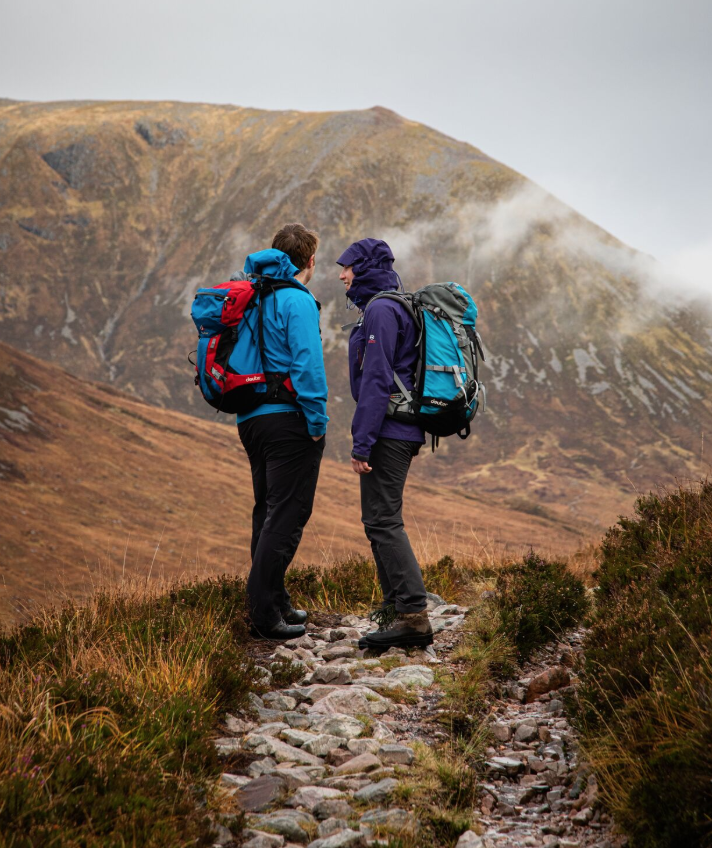
Look on the bright side
We take our weather for granted, but in global terms it is actually quite a rare thing. Britain has a ‘marine west coast’ oceanic climate, a type only found in a few other places around the world like South America, southern Australia and New Zealand. Typically this means we get relatively cool summers, relatively warm winters and frequent stormy weather. And in case it wasn’t obvious, we don’t get a dry season; instead we experience year-round rainfall.
That might sound uninspiring, but it does have upsides. Our position close to the path of the warm waters of Gulf Stream means we experience much warmer winter temperatures than other places at the same latitude. London is further north than Quebec City, which doesn’t experience the ameliorating effects of the Gulf Stream, and has an average winter temperature of -18C. So if things sometimes seem bad, at least they could be worse.
Treat yourself
In truly foul weather, it’s only sensible – indeed necessary – to liberally stuff your face with cake at every possible opportunity: before the walk (because you’re pre-loading), during it (because it’s necessary fuel) and afterwards (because you deserve a reward).
OK, you may not need that level of cake intake, but motivation is key, so don’t be afraid to fill up on your favourite snacks. Another sure-fire strategy is to plan your bad-weather hikes around pubs – the sheer joy of warming yourself by a roaring fire with a plate of pub food piled high in front of you is worth the effort of getting out in the first place.
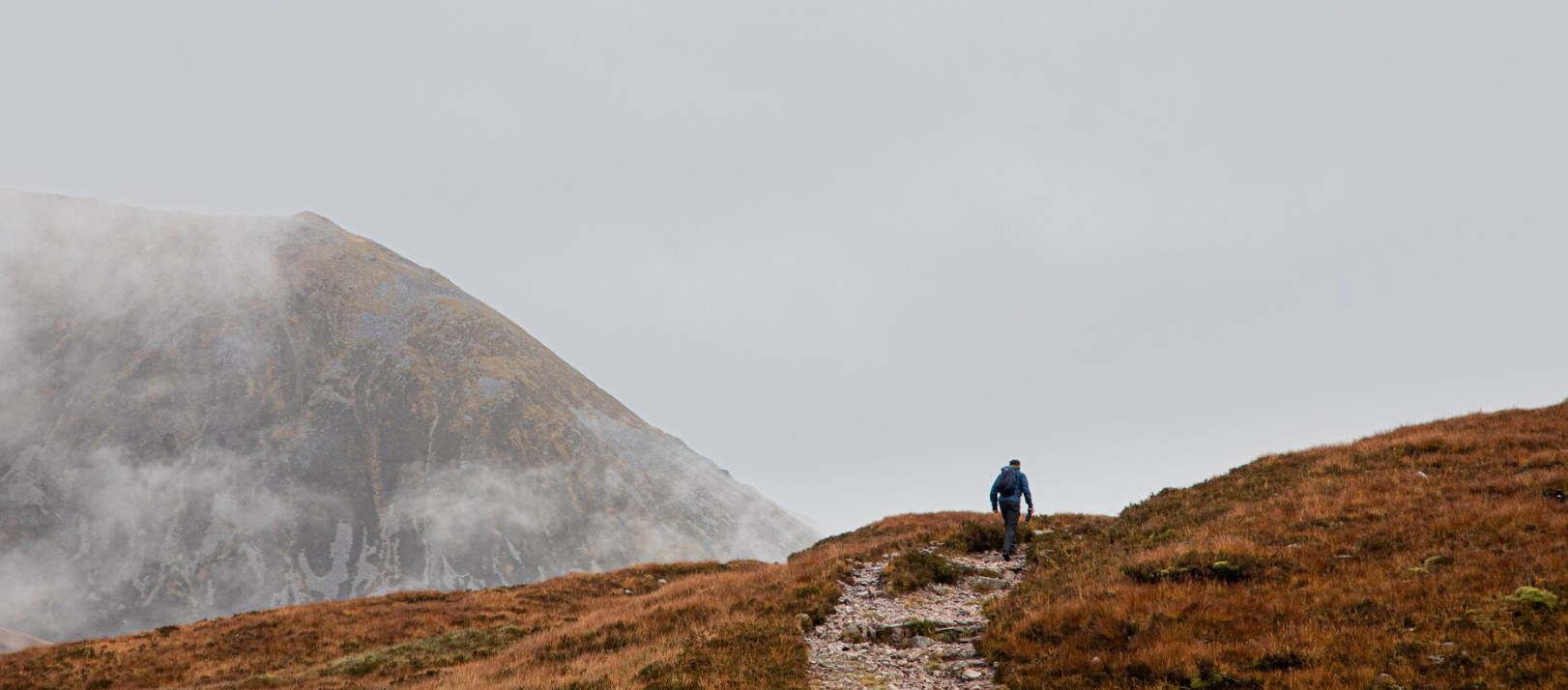
Appreciate our watery ecology
The climate we have is also fundamental to the ecology of these islands and the natural environments we know and love.
As well as doing useful things like keeping our reservoirs regularly topped up with drinking water, it means we are one of the few places in the world to have temperate rainforests; it gives us lush deciduous woodlands with fiery autumn colours; it creates the habitat for plant and animals species like bluebells, red grouse and red deer; it enables arctic-alpine plants like the dwarf willow to grow in our highest places; it fosters the conditions for salmon to migrate along our rivers, or rare Ice Age remnant fish to live in our lakes and lochans; and it plays its part in those spectacular intercontinental migrations of birds which fill our skies every spring and autumn.
Keep a close eye on the forecast…
Naturally, with our volatile climate, regular scrutiny of specialist mountain weather forecasts like Met Office Mountain Weather or the Mountain Weather Information Service is vital. Never rely on general weather forecasts; the conditions at habitation level can often be radically different to the tops, particularly during the ‘shoulder’ seasons of autumn and spring.
There are also various resources you can use to check specific local conditions in various places too, particularly over winter. For the Lake District, Weatherline provides both a forecast and live reports on high-level ground conditions, usually from Helvellyn, during the winter months. In Snowdonia, wardens produce regular reports on ground conditions on Snowdon through the winter, and the BMC provides year-round live weather and conditions information from Snowdon’s summit. North of the border, the Scottish Avalanche Information Service is an indispensable tool for assessing avalanche risk during the winter months – but don’t forget that avalanches can happen anywhere where enough snow has accumulated.
Photography: Dougie Cunningham

